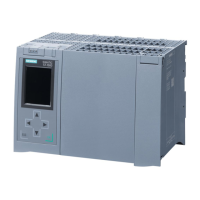Using PID basic functions
7.3 TCONT_CP
PID control
Function Manual, 03/2017, A5E35300227-AC
231
Fault descriptions and corrective measures
Compensating operator errors
TUN_ON and setpoint step
change or TUN_ST are set sim-
ultaneously
Transition to phase 1; how-
ever, tuning is not started.
• SP_INT = SP
old
or
• TUN_ST = FALSE
The setpoint change is canceled.
This prevents the controller from
settling to the new setpoint value
and from leaving the stationary
operating point unnecessarily.
Effective TUN_DLMN < 5% (end
of phase 1)
STATUS_H = 30002
• Transition to phase 0
• TUN_ON = FALSE
• SP = SP
old
Tuning is canceled.
The setpoint change is canceled.
This prevents the controller from
settling to the new setpoint value
and from leaving the stationary
operating point unnecessarily.
Point of inflection not reached (only if excited by setpoint step change)
At the latest, tuning is ended when the process value has passed 75% of the setpoint step
change (SP_INT-PV0). This is signaled by "inflection point not reached" in STATUS_H
(2xx2x).
The currently valid setpoint always applies. By reducing the setpoint, it is possible to achieve
an earlier end of the tuning function.
In typical temperature processes, cancelation of tuning at 75% of the setpoint step change is
normally adequate to prevent overshoot. However,
is advised, particularly in
processes with a greater delay (TU/TA > 0.1, process type III). If manipulated variable
excitation is too strong compared to the setpoint step change, the process value can
overshoot heavily (up to a factor of 3).
In higher-order processes, if the point of inflection is still a long way off after reaching 75% of
the setpoint step change, there will be significant overshoot. In addition, the controller
parameters are too stringent. In this case, you should reduce the controller parameters or
repeat the attempt.

